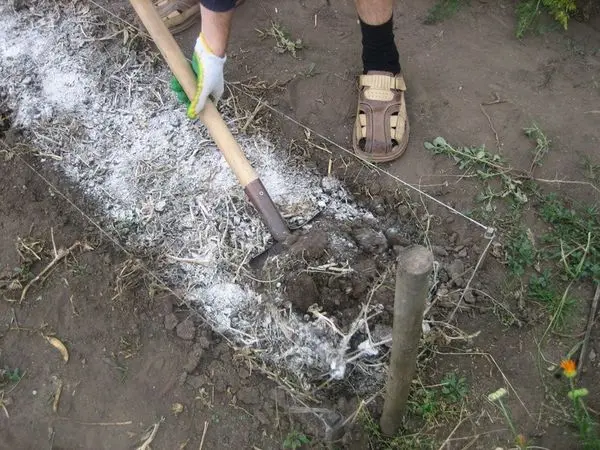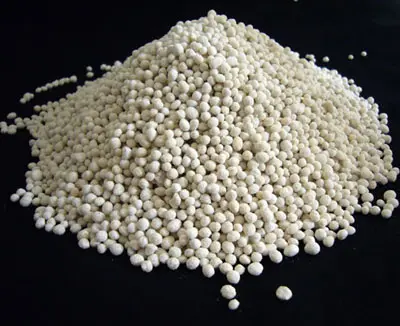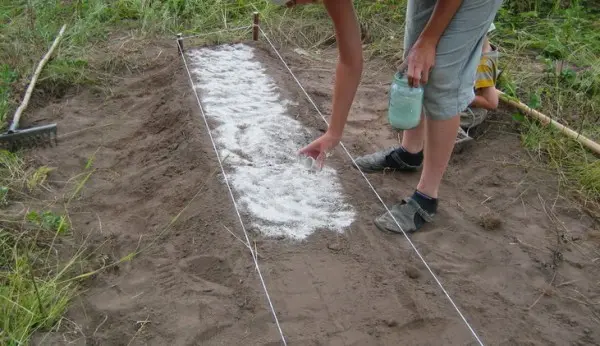Contents
Phosphorus is necessary for plants, it is thanks to it that energy processes in cells occur. Double superphosphate will help saturate crops with it and other trace elements, help plants retain their color, form many ovaries and give an excellent harvest.
When to apply
The use of this fertilizer helps to get a larger crop in quantity, better in quality, and shorten its ripening period. Grain crops have an increased protein content, while oilseeds have an increased fat content. Its use enhances the vitality of plants, helps them withstand adverse conditions.

Concentrated double superphosphate fertilizer is used throughout the season. In autumn and spring (usually April and September), according to the instructions, the main application is made, in May they are applied simultaneously with sowing and planting, and then they feed the plants all summer. If the underside of the leaves turns purple instead of green, or the ovaries form very weak and immediately fall off, you need to urgently organize top dressing – double superphosphate will help restore the balance of elements, saturate the plant with phosphorus. It also contains nitrogen, sulfur and trace elements that are easily absorbed by plant roots.
Phosphorus is needed by plants at all stages of life, it is especially in demand by young seedlings, when they grow intensively, gaining green mass. If they do not receive it on time, they become weak, prone to disease. It is phosphorus that ensures the flow of energy exchanges in cells, and the soil can give only 1% of the required amount.
Video “Useful information about phosphorus top dressing”
Informative video in which you can hear useful information and recommendations about the use of phosphate dressings.
What is fertilizer made from?
Two sources of phosphorus are known – these are animal bones and phosphorite. Double superphosphate is obtained from phosphorites, after the use of phosphoric acid. Sedimentary rock phosphorite is the main natural source of phosphorus for the production of fertilizers. First, phosphoric acid is obtained from phosphorite by treating it with sulfuric acid, then it is brought to a high concentration, and phosphorites are already treated with it. The resulting substance is granulated and dried – this is how concentrated fertilizer is produced. Phosphorites are ground very finely, while obtaining phosphate rock, it is also used in agriculture, but this is a completely different substance, it should not be confused with concentrated fertilizer.

What’s in
There are several types of phosphate fertilizers. All of them are made from phosphorites, but differ in their composition. Simple phosphate contains many ballast substances, for example, calcium sulfate – this substance allows the use of phosphate on acidic soils, since calcium can deoxidize or neutralize the soil. Superphosphate compares favorably with it by the almost complete absence of ballast substances, which makes it cheaper (less transport and storage costs). Double superphosphate contains in its composition phosphorus, nitrogen, sulfur and other trace elements such as copper, iron, zinc, molybdenum, boron, manganese. Fertilizer grade A and grade B are produced, their difference is in the amount of basic elements (phosphorus, nitrogen and sulfur). The formula is the same, but the percentage is different, phosphorus contains 38–46%.
Ammonized superphosphate is a nitrogen-phosphorus fertilizer, its composition is enhanced by an increased nitrogen content. It is successfully used on chernozem and chestnut soils, in protected ground. Double ammoniated superphosphate is a universal concentrated nitrogen-phosphorus fertilizer, which includes calcium. Its use enhances the recovery processes and normalizes alkaline or saline soils. Phosphorus in the composition of ammoniated fertilizer is not more than 32%, but nitrogen is 10%, and calcium is 14%. It is also obtained from phosphorite.

How to calculate the dosage
The packaging must have instructions that indicate the dosage of fertilizer for different crops. But you need to pay attention to the characteristics and condition of the soil. If it is planned to grow greens and vegetables in the garden, then you need to apply 30–40 g of fertilizer per square meter of area. But if the land is emaciated and poor, then the amount is increased by 20-30%.
It is recommended to apply up to 170 kg per hectare for spring crops, and 120–130 kg for winter crops. Under corn, 120–170 kg per hectare are applied. Before digging the site in autumn and spring, you can simply scatter granules on the surface – 200-300 kg – per ha. But keep in mind that double superphosphate contains acid and is a substance that can increase soil acidity. Therefore, on acidic soils, the amount of fertilizer applied should be less than on alkaline soils.

Under each adult fruit-bearing tree in the fall, it is recommended to apply 500 g of fertilizer. The granules are simply poured onto the ground in a near-trunk circle and dug up. When seedlings are planted and potatoes are planted, 3 g of an agrochemical is poured into each well.
Recommended Use
The main application in spring or autumn should be made, according to the instructions, to the depth of the seeds. When the granules are scattered over the surface of the earth, it is assumed that this earth will then be dug up along with fertilizers, because phosphorus is inactive in the soil, it must be brought to the roots. They also come with ammoniated superphosphate. After digging, the nutrients, mixing with the soil, fall to the desired level.
Corn and sunflower seeds should not come into contact with fertilizer, they perfectly receive nutrients through a small layer of soil. But the seeds of cereals, hemp, flax are mixed with granules before sowing. Usually superphosphate (ammonized too) is used on all types of soils. But if the soil is very acidic, the use of superphosphates becomes meaningless – their dissolution becomes unlikely. Therefore, the soil must first be deoxidized. To do this, 200 g of wood ash or 500 g of lime per 1 square meter are added to the soil. You can make superphosphates only after a month.

Often they combine different mineral fertilizers so that their composition complements each other. So double superphosphate is used in the fall with nitrogen-potassium, and in the spring with potash supplements. But superphosphates should never be used together with lime, chalk or urea. Between them, chemical reactions will occur that will turn a very effective fertilizer into a completely useless substance.
It is very important that plants get sulfur together with phosphorus. Sulfur deficiency is often confused with nitrogen deficiency – they have similar symptoms. And sulfur is very important for the qualitative composition of fruits, it does not give an increase in yield, but makes the fruits tastier and healthier, accumulating vitamins and sugars. The fertilizer is non-toxic, it is perfectly stored, does not lose its shape.
Video “Which fertilizer is better to choose”
Informative video with tips and advice on choosing a soil nutrient.









